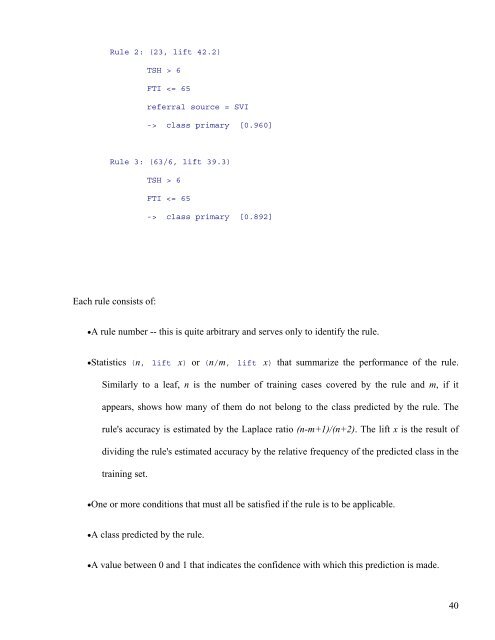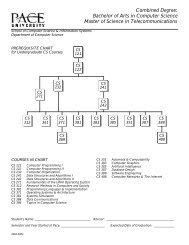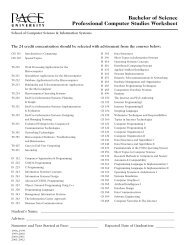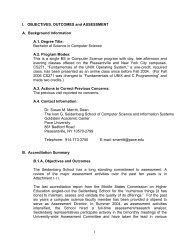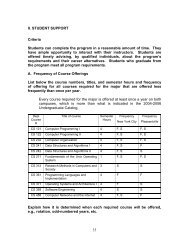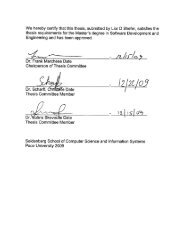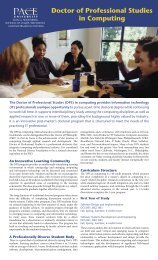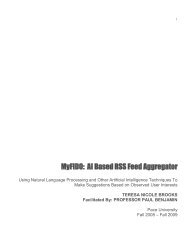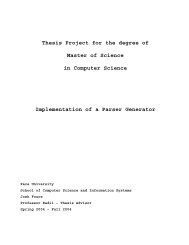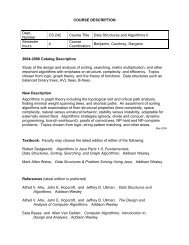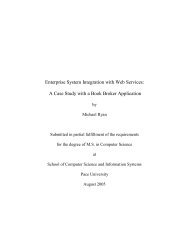Web Analytics Understanding user behavior and ... - pace university
Web Analytics Understanding user behavior and ... - pace university
Web Analytics Understanding user behavior and ... - pace university
You also want an ePaper? Increase the reach of your titles
YUMPU automatically turns print PDFs into web optimized ePapers that Google loves.
Rule 2: (23, lift 42.2)<br />
TSH > 6<br />
FTI class primary [0.960]<br />
Rule 3: (63/6, lift 39.3)<br />
Each rule consists of:<br />
TSH > 6<br />
FTI class primary [0.892]<br />
•A rule number -- this is quite arbitrary <strong>and</strong> serves only to identify the rule.<br />
•Statistics (n, lift x) or (n/m, lift x) that summarize the performance of the rule.<br />
Similarly to a leaf, n is the number of training cases covered by the rule <strong>and</strong> m, if it<br />
appears, shows how many of them do not belong to the class predicted by the rule. The<br />
rule's accuracy is estimated by the Laplace ratio (n-m+1)/(n+2). The lift x is the result of<br />
dividing the rule's estimated accuracy by the relative frequency of the predicted class in the<br />
training set.<br />
•One or more conditions that must all be satisfied if the rule is to be applicable.<br />
•A class predicted by the rule.<br />
•A value between 0 <strong>and</strong> 1 that indicates the confidence with which this prediction is made.<br />
40


